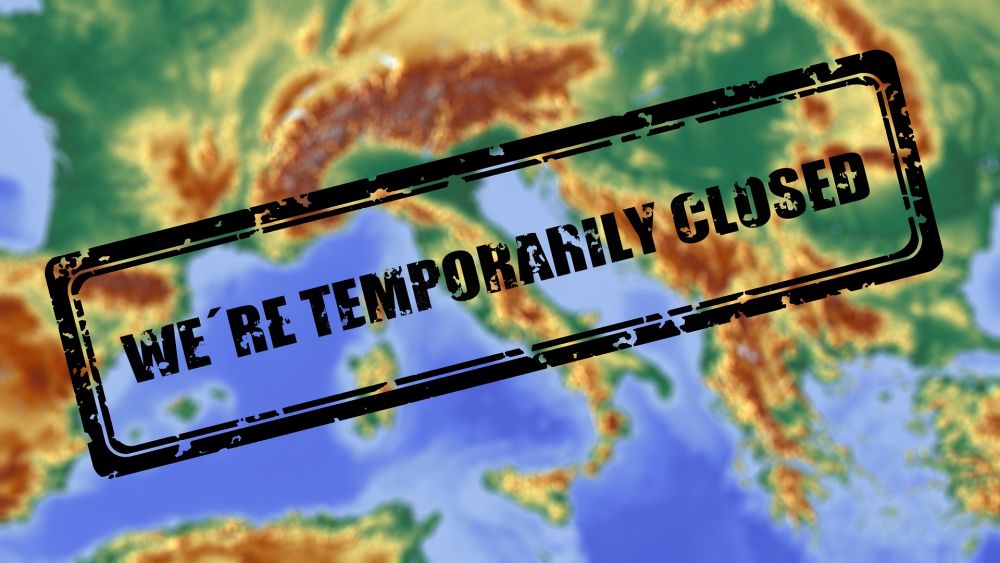A pandemic is a global outbreak of a (new) disease. It is an epidemic that has spread over several countries or continents, affecting a large number of people.
The worldwide coronavirus outbreak was officially declared a pandemic by the World Health Organization (WHO) on March 11 during a media briefing. According to WHO Director-General Tedros Adhanom Ghebreyesus, Ph.D., the decision to classify COVID-19 as a pandemic was not easy but resulted from concern for "the alarming levels of spread and severity, and by the alarming levels of inaction."
Generally, a pandemic will likely spawn a plethora of legal and ethical dilemmas and political and economic consequences, and its impact will depend to a large extent on the public's (government inclusive) perception of and reaction to the crisis.
Pandemics, like many other natural disasters, offer a unique opportunity to study how economies work. Little is known about their medium- to long-term macroeconomic effects though a lot of studies have been carried out to gauge the likely economic fallout.
The coronavirus pandemic has dramatically disrupted the everyday social and economic patterns of societies around the world. Economists have focused on its economic impact and on what central banks and governments should do in response to an unusual simultaneous disruption of both supply and demand.
What is Pandemic Economics?
While a series of studies have been carried out on past pandemics and projections made about current and future pandemics, economists have shied away from defining the term pandemic economics and from providing a generally acceptable and rational framework for dealing with these global emergencies. The economics discipline has provided the most influential framework for thinking about public policies, but it has proved inadequate, both in preparing for the current emergency and for dealing with it. The pandemic underlines the necessity for a rethinking of our received ideas about economics and points in some directions that this rethinking should take.
To me, pandemic economics is the study that seeks to investigate a global outbreak of disease, its effects on the national and international economies, with intentions to proffer the best possible responses by government (and private) instruments towards ensuring public health and enhancing the flow of economic activities before, during and after an outbreak.
Unlike Wartime economics, the economy has not been leveled by bombs—it has simply been turned off. There is not much loss in capital.
CLICK HERE TO SIGN UP AND JOIN OUR NETWORK OF READERS
WHAT SHOULD INFORM THE GOVERNMENT DECISION ON THE CURRENT SHUTDOWN?
GDP GROWTH OR PUBLIC HEALTH
“The COVID-19 pandemic is, first and foremost, a health crisis. However, it is rapidly becoming an economic one too”, says Martin McKee & David Stuckler of Nature Medicine. Economists are sharply divided on which approach to adopt in dealing with the trade-off between economic activity and public health.
Public health advocates posit that this is not an economic crisis but a healthcare crisis. “In an economic crisis, you could imagine a situation in which people lose their jobs and are unable to spend money. That’s called a demand shock, which is what happened during the global financial crisis of 2008. Or producers could raise prices (for various reasons), making it harder to buy their goods. That’s a supply shock, and it describes the oil crises of 1973 and 1979. But what is happening now cannot be addressed primarily by economic responses, because we are witnessing the suspension of economics itself”, says Fareed Zakaria of Washington Post. According to Zakaria, “Today, even if you have money, increasingly you cannot go into a shop, restaurant, theater, sports arena or mall because those places are closed. If you own a factory that hasn’t already closed for health reasons, you may still have to shut it down because you can’t get key components from suppliers or you can’t find enough stores open to sell your goods. In these conditions, cash to consumers cannot jump-start consumption. Relief to producers will not jump-start production. This problem is on a level different and far greater than the recession of 2008 or the aftermath of 9/11. If it were to go on for months, it could look worse than the Great Depression.”
“Data from countries at the leading edge of the pandemic (China, France, Italy, Spain, the UK, and the US) paint a grim picture of what’s to come for developing countries. The data tell us that (1) the pace of spread is accelerating and many low-income countries will unavoidably face rapid rises in COVID-19 caseloads in the coming weeks and months as community transmission takes hold, but also that (2) clinical need for inpatient care is still limited to a fairly small number of infected patients”, according to a paper by Center for Global Development.
This calls for the adoption of non-pharmaceutical interventions—including lockdown and social distancing measures— to buy time so that hospital intensive care unit (ICU) capacity can be rapidly built up to meet the anticipated rise in numbers of very sick patients and limit the rate of spread.
“Controlling the epidemic means ‘flattening the epidemiologic curve’. This is done by slowing the rate of infection by, for example, reducing person-to-person contact overall via work and school closures and travel bans (‘social distancing’), and by removing infected people from the population either by curing them or quarantining them. A flatter curve saves lives directly (fewer get ill and so fewer die) and indirectly since it avoids bottlenecks in the healthcare system that typically result in suboptimal treatment. A desire to flatten the curve is exactly why governments around the world are taking what might seem like extreme steps”, says Richard Baldwin and Beatrice Weder di Mauro of Graduate Institute, Geneva.
Indeed, China’s case shows that we can stop coronavirus through containment - but at a significant economic cost. In China’s case, policymakers implemented strict mobility constraints, both at the national and local levels.
A recent study, using data from the flu pandemic that swept the U.S. in 1918-1919, finds cities that acted more emphatically to limit social and civic interactions had more economic growth following the period of restrictions. Indeed, cities that implemented social distancing and other public health interventions just 10 days earlier than their counterparts saw a 5 percent relative increase in manufacturing employment after the pandemic ended, through 1923. Similarly, an extra 50 days of social distancing was worth a 6.5 percent increase in manufacturing employment, in a given city. “We find no evidence that cities that acted more aggressively in public health terms performed worse in economic terms,” says Emil Verner, an assistant professor in the MIT Sloan School of Management and co-author of a new paper detailing the findings. “If anything, the cities that acted more aggressively performed better.”
With that in mind, he observes, the idea of a “trade-off” between public health and economic activity does not hold up to scrutiny; places that are harder hit by a pandemic are unlikely to rebuild their economic capacities as quickly, compared to more intact areas.
Still, the growth evangelists are right about one thing. Severe lockdowns produce a parallel human misery—with millions of unemployed, thousands of looming bankruptcies, and extreme financial anguish. Public health interventions can have dire effects on the economy.“They impede individual economic freedom to travel and pursue a business or livelihood. They also affect local, national, and regional economies through the impacts on trade, travel, tourism, and agriculture”, says Lawrence O. Gostin of Georgetown University. Success in containing the virus comes at the price of slowing economic activity, no matter whether social distancing and reduced mobility are voluntary or enforced.
Economic decline itself has an adverse effect on health. Previous crises have shown how an economic crash has dire consequences for public health. A reduction in economic activity reduces the circulation of money and, with it, tax revenues. This reduces the finances available for the public-health countermeasures needed to control the pandemic. It also hits individuals and families, who may see their income plummet catastrophically. Once they have depleted their financial reserves, companies close, with consequences for their owners, employees, and suppliers.
It is believed that a total shutdown of the economy will lead to a recession which may amount to a deep depression if sustained over a longer period. This is presumed to affect public health in the long run with increased suicide, mental and psychological disorders, etc.
"We are in uncharted territory where the usual tools for economic stabilization, both monetary and fiscal policy, will be overwhelmed by disruptions in supply and the demands created by unprecedented hoarding. We need to think anew, even adopting wartime measures of direct economic management and allocation to ensure safety and to protect the most vulnerable among us”, says Gerald Friedman of the University of Massachusetts at Amherst
In the COVID-19 pandemic, the world is entering uncharted territory. It seems the world’s leaders must prepare to preserve health.


